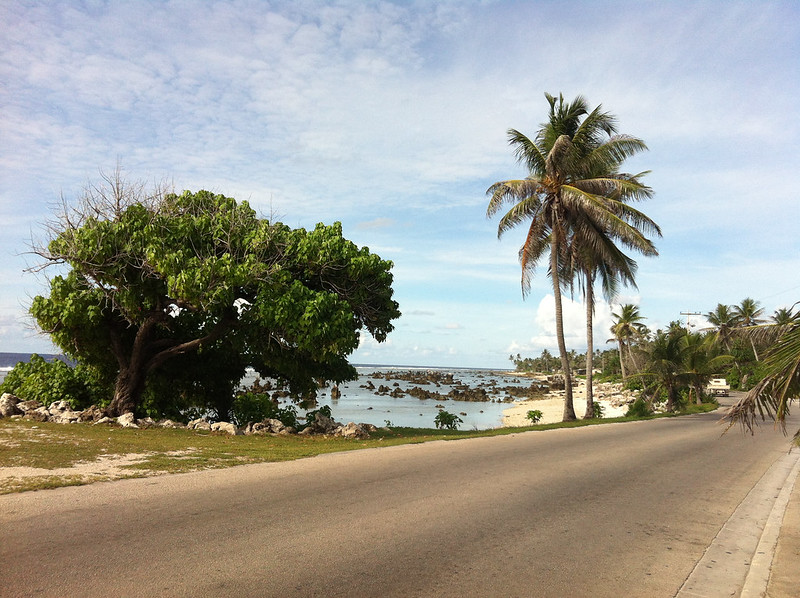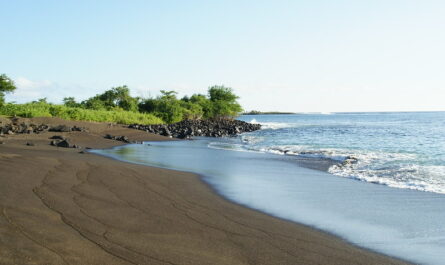The small island nation of Nauru, located in the Pacific Ocean, has a history that is both extraordinary and tragic, largely tied to the discovery and exploitation of its phosphate deposits. Nauru’s phosphate reserves were formed over millennia from bird droppings (guano), and their extraction turned the island into one of the wealthiest countries per capita in the world. However, this wealth came at a cost: environmental degradation, financial mismanagement, and the eventual collapse of the phosphate industry. This article explores the rise and fall of phosphate mining in Nauru and its long-lasting effects on the country.
1. Discovery of Phosphate and Early Exploitation
Phosphate was first discovered in Nauru by a geologist named Albert Ellis in 1900, while Nauru was under German colonial rule. Phosphate, a valuable resource used as a fertilizer, was soon extracted and exported under the administration of the Pacific Phosphate Company, and later the British Phosphate Commissioners (BPC) after World War I when Nauru became a League of Nations mandate under Australian, New Zealand, and British oversight.
From the early 20th century until Nauru gained its independence in 1968, the island was heavily mined, with little concern for environmental sustainability. Phosphate extraction was conducted with minimal local involvement, and the profits largely benefited foreign powers. The mining process transformed the island’s landscape, leaving barren, coral-limestone pinnacles in place of the lush tropical environment that once covered Nauru.
2. Post-Independence: Nauru Takes Control
Upon gaining independence in 1968, Nauru took control of its phosphate resources. The newly established Nauru Phosphate Corporation (NPC) was responsible for managing phosphate extraction, and the country experienced an economic boom. In the 1970s and 1980s, Nauru’s phosphate wealth propelled the country to one of the highest per capita incomes in the world. The government invested in global real estate and infrastructure, with the hope that these investments would secure the nation’s long-term prosperity after the phosphate ran out.
At its height, phosphate mining accounted for nearly all of Nauru’s income, with more than 80% of the island’s land area devoted to mining operations. Nauru’s rapid economic growth gave rise to improvements in education, healthcare, and other public services, but these developments were built on an economy almost entirely dependent on a finite resource.
3. Environmental and Social Costs
Despite the initial wealth generated by phosphate mining, the environmental consequences were severe. By the late 1980s, much of the island had been strip-mined, leaving 80% of Nauru’s land uninhabitable. The island’s once lush interior was reduced to a wasteland of jagged coral pinnacles, making it nearly impossible to develop any form of agriculture or sustainable industry. The local population was confined to the narrow coastal areas, and freshwater supplies became increasingly scarce.
The social impact was also significant. While Nauruans enjoyed a period of wealth, the reliance on phosphate and foreign labor for mining created a culture of dependency. As the phosphate began to run out, there was no long-term economic plan to replace the income it had generated.
4. Financial Mismanagement and the Collapse of Phosphate Wealth
In addition to environmental destruction, poor financial management played a significant role in Nauru’s economic downfall. The investments made in global real estate, including high-profile assets like Nauru House in Melbourne and properties in Honolulu and London, failed to provide the expected returns. Corruption, high spending, and lack of accountability further contributed to the mismanagement of the island’s wealth.
By the 1990s, phosphate reserves were nearly depleted, and Nauru’s economy faced collapse. The island found itself unable to sustain the high standard of living it had become accustomed to, and it began to seek international aid. Nauru was also left with few viable economic alternatives due to the extensive environmental degradation caused by mining.
5. The Aftermath and Attempts at Rehabilitation
In the years following the collapse of phosphate mining, Nauru struggled to regain economic stability. The country sought to diversify its economy through various means, including becoming a tax haven and even controversially hosting offshore detention centers for refugees and asylum seekers on behalf of the Australian government. However, these efforts have not provided the same level of wealth as phosphate mining once did.
There have been efforts to rehabilitate the mined-out areas of the island, but progress has been slow and costly. Restoring the island to a livable state remains a long-term challenge, and much of the land remains uninhabitable. Nauru’s reliance on foreign aid continues to this day, with the environmental and financial scars of phosphate mining still evident in every aspect of island life.
Conclusion
The rise and fall of phosphate mining in Nauru is a cautionary tale about the dangers of over-reliance on a single natural resource, the importance of environmental sustainability, and the consequences of financial mismanagement. While the island experienced a period of extraordinary wealth, it ultimately paid a heavy price, leaving it environmentally devastated and economically dependent. Nauru’s experience serves as a powerful reminder of the complex relationship between resource extraction, environmental degradation, and long-term economic stability.



